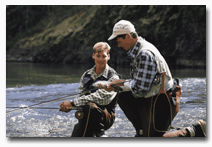Columbia Sportswear Co., Portland, Ore., has named Angela Hult public relations manager. In new her
position, Hult will oversee public affairs, community and media relations and corporate
communication. Jones Companies Ltd., Humboldt, Tenn., has created three new positions within the
company.J.E. Jed Pratt has been named account vice president. Pratt, who joined the company from
GIW Industries, will manage sales outside the southeastern United States and Canada.The company has
also named Jim Thomas as materials manager. Thomas, who will work out of the Humboldt headquarters,
will be responsible for raw material purchasing. He has more than 21 years of experience in the
textile industry.Dudley Baker was named as Latin America business development and customer service
representative. Baker will manage the companys Latin American accounts.Johnston Industries Inc.,
Columbus, Ga., has recently named Steve Marrandino senior vice president of new customer
development for its greige fabrics division.Avondale Mills Inc., Graniteville, S.C., has announced
the appointed Jerry King as director, human resources, Western Operations. King will be responsible
for all human resources functions for the companys plants in Alabama and the companys yarn
manufacturing facilities. He has served as director of human resources for the companys yarn
division since 1987. He has been with the company for 30 years.
December 1999






